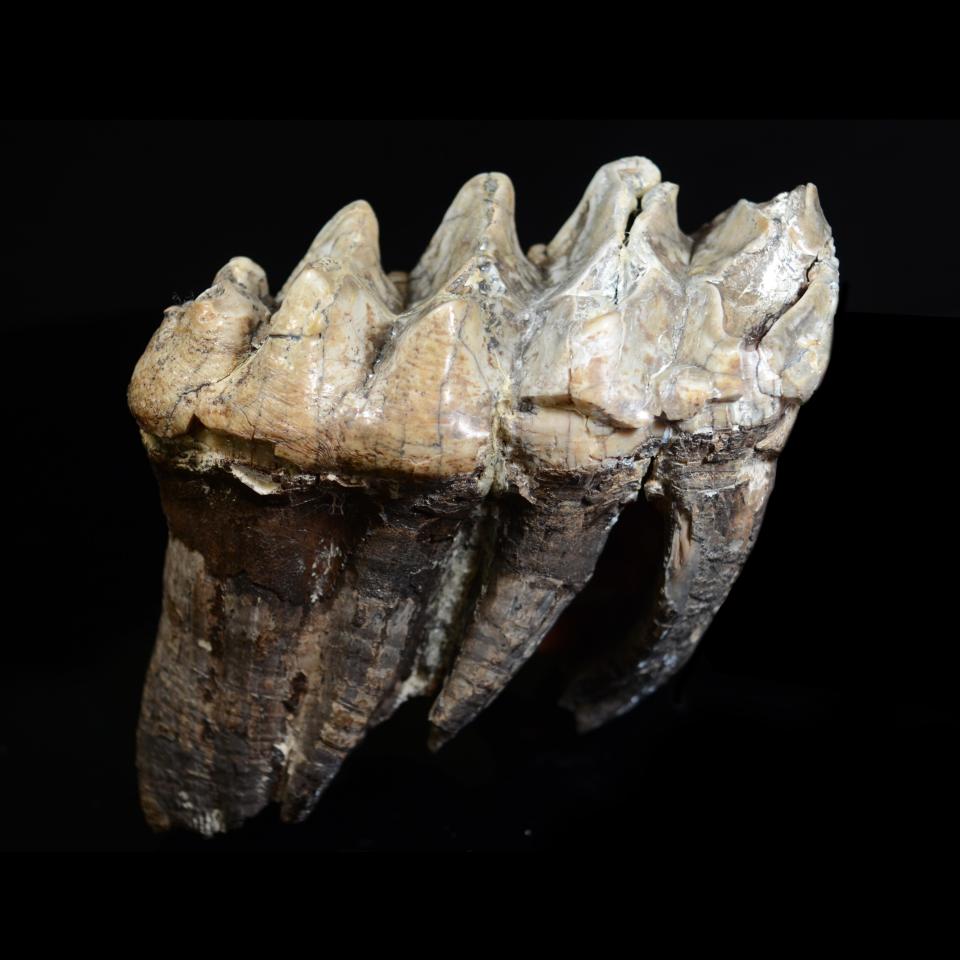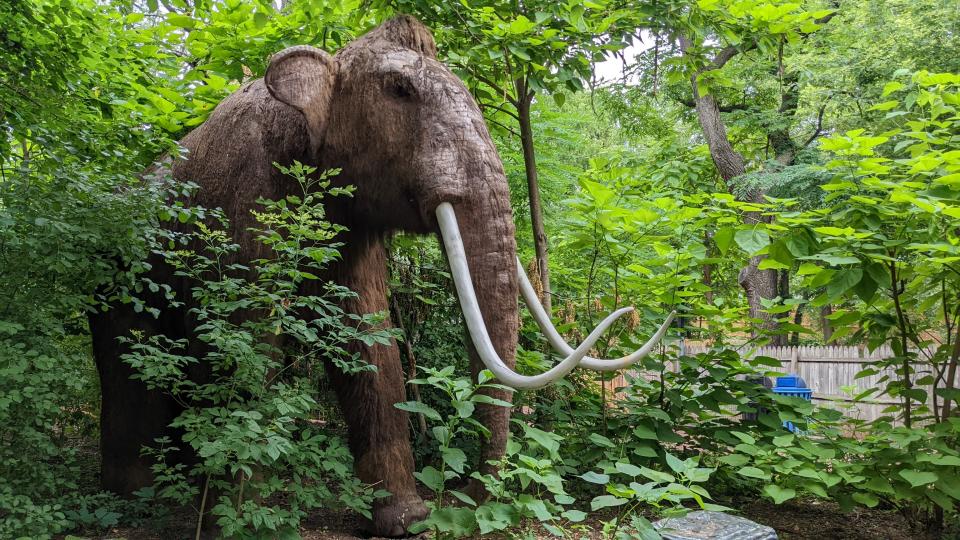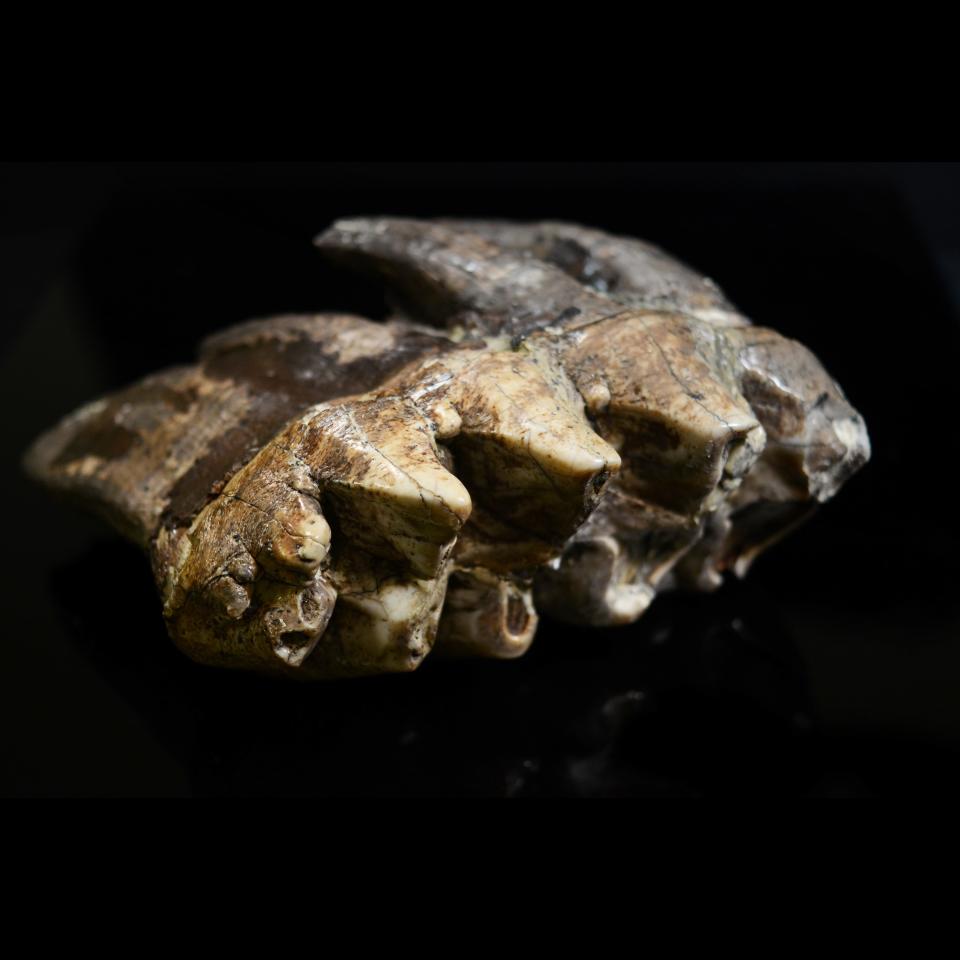Mastodon skeleton discovered in Steuben County resurfaces with historic marker.
John Morsch was digging at the edge of his property when he made a discovery that is still creating headlines over a century later.
Morsch uncovered a large bone — and then another, and another. He called in some neighbors to help with the excavation, and by the time they were done more than 200 bones were removed from the Steuben County soil.
Morsch had discovered the near-complete skeleton of a mastodon, a large tusked creature similar in stature to the wooly mammoth and today’s elephants.
The find put Perkinsville, a small hamlet in the Town of Wayland, in the national spotlight throughout 1907. Soon, Morsch’s discovery will be commemorated with a Pomeroy Foundation Roadside Marker. Wayland historian Sandy Booth hopes the marker will introduce new generations to Morsch’s historic find.
“I think it will surprise a lot of people. I don’t think a lot of people know about it today,” said Booth, who led the grant application. “Who would know we walk the same spot this mastodon creature did years ago?”
How was the Perkinsville mastodon discovered?

Morsch made the discovery on the edge of farmland that bordered a marl bed. Marl is a layer of sediment typically found under lakes or swamps. The Perkinsville marl bed, almost pure white, sat under about a foot of black muck and extended six feet into the earth. The mastodon was found just a few feet below ground level.
Morsch’s property bordered the Perkinsville swamp, where the mastodon took its last step some 13,350 years ago, according to carbon dating of the bones.
Much of the skeleton was intact, including all four legs and feet, ribs and vertebrae, and a portion of the lower jaw, with teeth still attached. Most of the skull was missing, however, leading some to speculate that the mastodon sunk into the mire of the swamp, with only its head left exposed to scavengers.
“It’s not an unreasonable hypothesis, it would just be really hard to test it,” said Dr. Robert Feranec, a director and curator at the New York State Museum. “There are other places in the country where we know mastodons have gotten stuck.”
The marl preserved the bones, so much so that it appeared “as if they had just sunk recently instead of so many, many years ago,” said Booth.
How widespread were mastodons in New York state?

Mastodons were once common across New York state and the Great Lakes region. The massive creatures populated the area after the Ice Age, drawn to the boreal forest that dominated the landscape at the time. Mastodons munched on the needles and twigs of pine and spruce trees.
Feranec said New York has the second most mastodon discoveries in the country, trailing only Michigan. Most consist of single teeth or bones, not full specimens.
“In this museum we have 30 mastodons. Of those 30, we probably have good portions of five of them,” said Feranec. “Finding a relatively complete mastodon would have been notable, particularly at the time they found it.”
An adult mastodon could weigh over five tons. A molar recovered from the Perkinsville mastodon is nearly a foot long and weighs over nine pounds.
New power 94-megawatt solar facility planned in Allegany County. See where, construction timeline
Wildlife Shifting temps, trends: Is it time to change the Spring turkey season in New York state?
How to see the new historic marker
The Pomeroy Foundation Roadside Marker will be unveiled June 4 at 12:30 p.m. The marker is being placed at the Chapel Street entrance to the Perkinsville Nature Conservancy, which spans where the mastodon was discovered.
“We decided to put the marker there because that’s the only place people could enter to get back to where the marl beds are,” said Booth. “The John Morsch farm was on the western edge of the marl bed so it’s not far from where we’re putting the sign. It’s in the general vicinity.”
Booth said the area is popular with kayakers and hikers who will now realize they are walking in the footsteps of a mastodon. Following the unveiling, Feranec will be appearing at the Wayland Historical Society to discuss the find at 2 p.m.
Education Chargers, Red Dragons, Coyotes, Fire Hawks. The mascot Final 4 at Canisteo-Greenwood
How to see the Perkinsville mastodon

The mastodon’s remains have been housed at the New York State Museum in Albany since 1916. Feranec said at least one of the teeth were on exhibit for much of the 20th century. Teeth are also occasionally loaned out to historical societies, while a caste of one of the mastodon’s teeth has been shown to thousands of school groups in the area.
“This individual has gotten lots of coverage with the public,” said Feranec. “It’s nice to get this information out to places where these species came from. Sometimes people don’t know these specimens were in their backyard.”
Feranec will have a few of the original teeth on hand at the June 4 program. The Museum recently made a 3D scan of the mastodon’s tooth available online. Feranec also utilized the Perkinsville mastodon in a research study designed to understand the impacts of climate change. Mastodons went extinct about 10,000 years ago, with changes in climate suspected as the primary culprit in the demise of the species.
“We can learn a lot about what’s going to happen in the next few hundred years by looking at these animals that went through global warming in the past from the Ice Age to the present day,” said Feranec. “This particular specimen has a date on it we utilized in those types of studies. For me it’s an important specimen.”
Are mastodons still being discovered?
Mastodon bones are still being discovered today. Feranec said a full skeleton was found by an Orange County farmer in 2015, and a pair of tusks on the Wallkill River were excavated in 2010.
“When people drain their ponds every once in a while they’ll find a mastodon at the bottom,” said Feranec. “You won’t know it’s there until you actually drain the pond. That can happen. I’m sure there are many, many more mastodons throughout the state. We’d love to have them in the museum. I expect there’s many more to come.”
This article originally appeared on The Evening Tribune: Roadside marker points to Steuben County mastodon skeleton find

